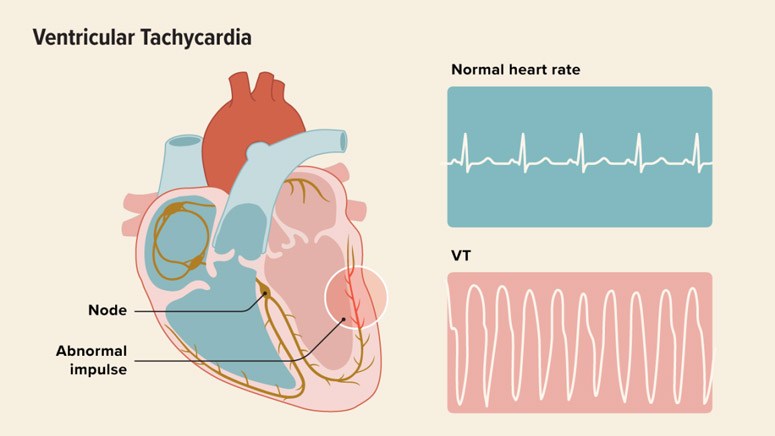Types of Tachyarrhythmia

The different types of tachyarrhythmia is due to the variety of places that the changes in the heart’s electrical conduction system can occur. The different types include:
-
- Multifocal atrial tachycardia: this is a rare condition in which the atria sends too many signals to the ventricles. It is most common in people with cardiopulmonary conditions [2].
- Paroxysmal tachycardia: this occurs when the atria goes in and out of the atrial tachycardia.
- Paroxysmal supraventricular tachycardia: this is when a short circuit along the usual pathway of electric signals I’m the heart causes the signal to speed up instead of following its normal pattern. This type is also typically episodic.
- Sinus tachycardia: this happens when the Sinus node sends out signals that causes the heart to beat faster than normal. While it may occur due to intense exercise, caffeine or other normal triggers, it becomes a problem when it occurs without obvious triggers.
- Ventricular tachycardia: Ventricular tachycardia causes a heart rate of more than 100 bpm and at least three irregular heartbeat in a row. This can be life threatening.
- Atrial fibrillation: this is the most common type of heart arrhythmia. It is when the two upper chambers of your heart are affected. This disrupts the flow of blood to the ventricles and the rest of the body.
- Atrial flutter: this is a type of abnormal heart rhythm in which the upper chambers of your heart beat too fast, resulting in the lower Chambers to also beat faster than normal.













